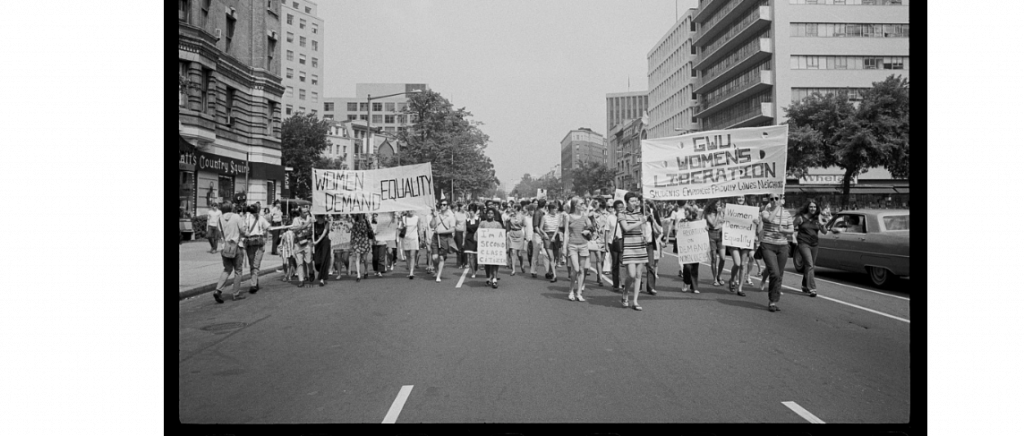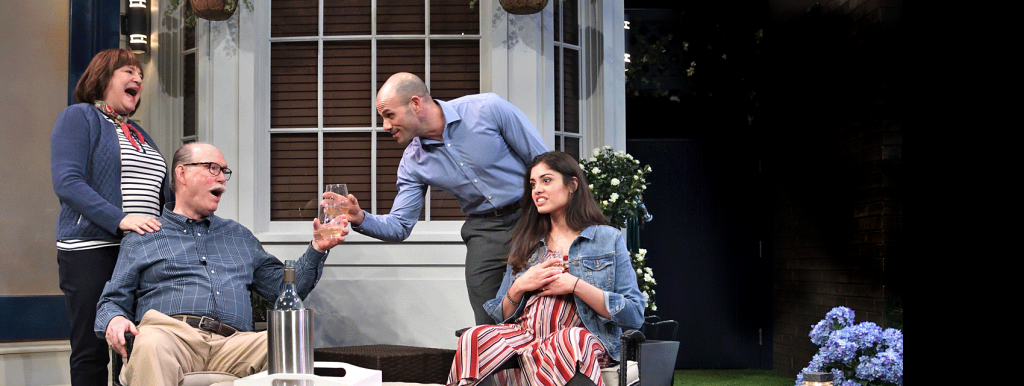By Janice Okoomian
Dr. Okoomian is an assistant professor of gender and women’s studies at Rhode Island College.

Feminism thrives in times of social upheaval, especially when there are changes in the structures or norms of work, family, education, fertility, marriage, or sex. The Second Wave feminist movement (aka the Women’s Liberation Movement) in the United States arose in the context of other social movements of the 1960s: the Civil Rights Movement, the anti-war movement, and the sexual revolution.
By 1972, when The Inferior Sex takes place, Women’s Lib was in full swing. Women advocated for equal pay and daycare. College students (with the support of women faculty and administrators) demanded that there be women authors in the curriculum as well as special courses in which they could study women’s lives and issues; they also demanded an end to gender-based college admissions quotas. In 1970, The Boston Women’s Health Book collective printed a newsprint booklet called “Our Bodies, Ourselves,” the first health resource by and for women. In Chicago, an underground network called the Janes escorted women seeking abortions to providers; some of the Janes learned to perform abortions themselves. All areas of life and institutions were open to feminist critique and action.
Some individual women broke barriers and advanced the movement publicly — women like Shirley Chisholm, the first Black woman elected to U.S. Congress (in 1968) and to run for president, and Billie Jean King, the tennis star who in 1975 famously defeated Bobby Riggs. But for the most part, the Women’s Lib movement did not have official leaders. Instead, there was a proliferation of different groups, ideas, and projects, often organized in nonhierarchical ways and operating by consensus. As in all social movements, there was never complete uniformity of opinion or perspective.
Indeed, there were raging debates among activists about what the priorities of the movement should be and which women the movement was for. The liberal wing of the movement, represented by groups like the National Organization of Women (N.O.W.), argued in favor of women’s admission to the professions (law, medicine, and business) and fought discriminatory lending and credit practices in the banking industry. Betty Friedan, one of the founders of N.O.W., had published The Feminine Mystique in 1963, a book considered foundational to the rise of feminist consciousness, at least among straight, white, middle-class women. Yet despite its perceived centrality and importance to many women, Friedan’s book did not adequately describe the life experience of most Black women and other women of color, queer women, or working-class women. Straight, white, middle-class women all too often assumed that their own experiences and issues were universally shared by all women. Some were distinctly unfriendly to women of color and lesbians; Friedan herself referred to lesbians as “the lavender menace.”
Black women argued that there was no single universal women’s experi-ence — that their experience as women was shaped as much by race as by gender, and their experience of sexism was shaped by racism. Some chose to stay in affiliation with mainstream groups but to continue to challenge white-centered perspectives of their fellow libbers; others left and formed Black feminist groups specifically devoted to focusing on issues central to Black women’s lives, using what we now would call a more intersectional approach. Some lesbian women also left liberal feminist organizations to create their own, more radical groups. These women believed that the goals of Women’s Liberation should not merely be to gain equal access to the institutions that they had created under the patriarchy; instead, society and its institutions needed to be completely restructured.
Fashion, beauty, motherhood, and homemaking defined women’s public social presence at the time, and activists well understood the tyranny and misogyny of beauty culture. In 1968 at the Miss American Pageant in Atlantic City, feminist protesters smuggled a banner reading “Women’s Liberation” into the hall and, as the winner was announced from the stage, they unfurled their banner from the balcony on live national television. Meanwhile, outside on the boardwalk, more protesters handed out leaflets, crowned a live sheep with a tiara, and threw signs of their oppression like girdles and brassieres, into a “freedom trash can.”
A similar revolt took place in publishing. Disgusted with standard-fare women’s magazines, a group of women journalists (including Gloria Steinem) founded the feminist magazine Ms. in 1971. While the magazine was wildly popular, Ms. editors found that advertisers expected them to run “complimentary copy” opposite their ads — for instance, an article about how to apply makeup on the page facing a mascara ad (this demand was only made to women’s magazines). In tonight’s performance, the journalists of Caposhi Rev also want to make their magazine relevant to women’s lives. They too struggle with the displeasure of their funders when they break the unwritten rules of gender.
The Second Wave feminist movement accomplished many things, such as bringing attention to domestic violence and sexual harassment, demanding that medical researchers include women and women’s health in their studies, recovering women artists like Frida Kahlo from obscurity, and much more. Possibly the most important thing to come out of the movement was the concept that “the personal is political.” Much of what oppresses women happens in their individual, personal lives and is thus hard to recognize as oppression. The women’s movement helped women recognize that there were larger sexual politics at work. You’ll see this principle at work in tonight’s performance as the characters grapple with what is happening in their own lives and the world at large. You may even find that, while these battles were being fought 50 years ago, many of them are still relevant right now.

